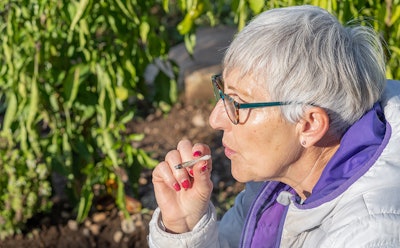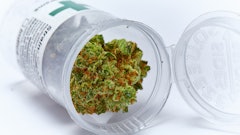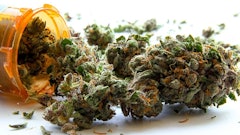
Adding anxiety as a qualifying condition has driven the success of Pennsylvania’s $1.7 billion medical cannabis program, according to a university study published this week in the Annals of Internal Medicine.
Pennsylvania cannabis regulators didn’t add anxiety to the state’s list of 24 qualifying conditions until July 2019, roughly 17 months after the first licensed dispensary sales began. It became the most-cited condition the following year, outpacing chronic pain and post-traumatic stress disorder (PTSD), according to the state’s Department of Health.
 Coleman Drake, Ph.D., associate professor, Department of Health Policy and Management, University of Pittsburgh School of Public Health.University of Pittsburgh
Coleman Drake, Ph.D., associate professor, Department of Health Policy and Management, University of Pittsburgh School of Public Health.University of Pittsburgh
Today, Pennsylvania is the second-largest medical cannabis program in the nation, bested only by Florida, and the sixth-largest when compared to both adult-use and medical-only markets, based on 2024 sales figures. With roughly 440,000 active certifications last year, Pennsylvania’s average medical cannabis patient spent nearly $4,000 at licensed dispensaries in 2024, according to the state’s Department of Health.
Before anxiety was added as a qualifying condition, 67% of the state’s medical cannabis diagnoses were for chronic pain and 16% were for PTSD, according to the researchers. Those numbers dropped to 41% and 11%, respectively, and anxiety quickly became the most common diagnosis at 60%, according to the researchers.
While the researchers couldn’t pinpoint exactly how many medical cannabis patients switched their qualifying condition to anxiety or had enrolled in the program for the first time with anxiety as their diagnosis—because many certifications listed multiple conditions—it was clear that anxiety was a driving force in the program’s expansion.
More specifically, Pennsylvania’s medical cannabis program grew from 202,436 diagnoses in 2019 to 379,082 in 2020, and from $306 million in 2019 sales to $823 million in 2020 sales, according to the Department of Health.
Drake, who co-authored the study with Linh Tran and Matthew Eisenberg, Ph.D., of Johns Hopkins, warned that the popularity of anxiety disorders as an entrance into Pennsylvania’s medical cannabis program could send a misleading message.
“Adding anxiety to the program may inadvertently signal to patients that cannabis is effective for treating it, despite the lack of evidence, which is concerning,” he said. “At the same time, cannabis may improve some health outcomes, relative to alternative treatments, depending on the individual and their circumstances.”
Drake said there is more evidence for cannabis as an effective treatment for conditions like chronic pain; however, “red tape and funding scarcity” due to the federal Schedule I classification of cannabis has restricted research and left unknowns.
“The urgency in filling these knowledge gaps is pretty clear, given increases in cannabis use over the past decade, and the large changes in cannabis markets, like those we observed in this study,” Drake said.
Since California first legalized medical cannabis in 1996, support for reform has grown to an all-time high, including 87% of Americans who say cannabis should be either legal for medical and adult-use (54%) or for medical use only (33%), according to a Pew Research Center report from July 8.
While anxiety is the most common qualifying condition in Pennsylvania, most of the now 40 states with medical cannabis programs have yet to add it to their lists. As such, chronic pain was the most common patient-reported qualifying condition (48.4%) in 2022 in the U.S., followed by anxiety (14.2%) and PTSD (13%), according to an April 2024 report that was primarily funded by the National Institute on Drug Abuse of the National Institutes of Health.
Also, not all state medical cannabis patient populations follow the same patterns. In New Mexico, for example, 47.5% of patients are enrolled with PTSD as their primary qualification as of June 2025, followed by chronic pain (27.3%) and anxiety (9.3%), according to the state’s Department of Health. New Mexico added anxiety as a qualifying condition in January 2023.
Many other states also include anxiety as a qualifying condition, such as Nevada, New Hampshire, New Jersey, North Dakota, Oklahoma and Virginia.
Meanwhile, Alabama includes “panic disorder,” and Maine and New York allow certifying physicians to approve patients for medical cannabis for conditions they deem clinically appropriate.
In Pennsylvania, more than 68% of the state’s 440,000-plus qualifying patients in 2024 listed anxiety as a qualifying condition on their certification, according to the Department of Health.




















.png?ar=16%3A9&auto=format%2Ccompress&fit=crop&h=135&q=70&w=240)





